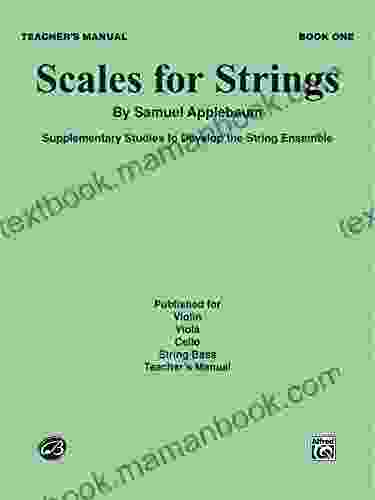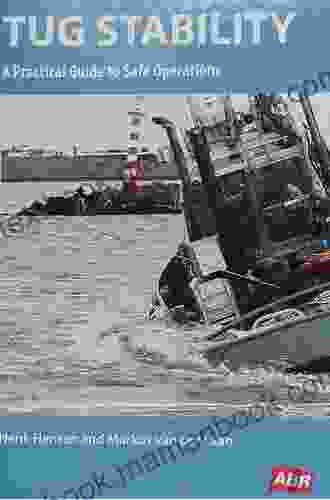A Comprehensive Guide to Operational Safety: Ensuring Workplace Well-being

4 out of 5
| Language | : | English |
| File size | : | 83689 KB |
| Text-to-Speech | : | Enabled |
| Screen Reader | : | Supported |
| Enhanced typesetting | : | Enabled |
| Print length | : | 457 pages |
| Lending | : | Enabled |
Operational safety is a crucial aspect of any workplace, regardless of industry or size. It encompasses all measures taken to prevent accidents, injuries, and illnesses, ensuring the well-being of employees and safeguarding the organization's assets.
This comprehensive guide provides a detailed roadmap for organizations to establish and maintain effective operational safety practices. We will explore the key elements of operational safety, including risk management, safety regulations, safety training, and the importance of a strong safety culture.
1. Risk Management: Identifying and Mitigating Hazards
Risk management is the foundation of operational safety. It involves identifying, assessing, and controlling potential hazards in the workplace. A comprehensive risk assessment process should be conducted regularly to identify hazards and evaluate their likelihood and severity.
Once hazards have been identified, appropriate control measures must be implemented to mitigate their impact. Control measures can include engineering controls (e.g., machine guards),administrative controls (e.g., work procedures),and personal protective equipment (e.g., respirators).
2. Safety Regulations: Adhering to Legal Requirements
Every organization must comply with applicable safety regulations and standards. These regulations vary depending on the industry and jurisdiction. Failure to comply with safety regulations can result in fines, legal penalties, and reputational damage.
It is essential for organizations to stay up-to-date with the latest safety regulations and ensure that their operations are in compliance. Regular safety audits and inspections can help identify areas of non-compliance and ensure that corrective actions are taken.
3. Safety Training: Empowering Employees
Safety training is critical to ensuring that employees have the knowledge and skills to work safely. Training should cover a wide range of topics, including hazard identification, risk assessment, emergency procedures, and the proper use of personal protective equipment.
Training should be conducted regularly and tailored to the specific tasks and hazards associated with each job. It is also important to provide refresher training to ensure that employees retain the knowledge and skills they have acquired.
4. Safety Culture: Fostering a Safety-First Mindset
A strong safety culture is essential for maintaining a safe and healthy workplace. Safety culture refers to the values, beliefs, and attitudes of employees towards safety. When a strong safety culture exists, employees are more likely to prioritize safety in all aspects of their work.
Organizations can foster a strong safety culture by involving employees in safety decision-making, recognizing safety achievements, and providing a safe and supportive work environment. Leadership plays a crucial role in setting the tone for safety culture and ensuring that safety is a top priority.
5. Continuous Improvement: Monitoring and Evaluation
Operational safety is an ongoing process that requires continuous improvement. Organizations should regularly monitor and evaluate their safety performance to identify areas for improvement. Key metrics to track include accident rates, near misses, and employee feedback.
Regular safety audits and inspections can help identify potential hazards and non-conformities. Feedback from employees can also provide valuable insights into safety concerns and areas for improvement. Organizations should use this information to make data-driven decisions and continuously enhance their operational safety practices.
Operational safety is a vital aspect of any workplace, and it is the responsibility of every organization to create and maintain a safe and healthy work environment for its employees. By implementing effective risk management practices, adhering to safety regulations, providing comprehensive safety training, fostering a strong safety culture, and continuously monitoring and improving their safety performance, organizations can ensure the well-being of their employees and safeguard their assets.
Remember, operational safety is not just a matter of compliance, but an investment in the health and safety of your employees, the productivity of your organization, and the overall well-being of your community.
4 out of 5
| Language | : | English |
| File size | : | 83689 KB |
| Text-to-Speech | : | Enabled |
| Screen Reader | : | Supported |
| Enhanced typesetting | : | Enabled |
| Print length | : | 457 pages |
| Lending | : | Enabled |
Do you want to contribute by writing guest posts on this blog?
Please contact us and send us a resume of previous articles that you have written.
 Top Book
Top Book Novel
Novel Fiction
Fiction Nonfiction
Nonfiction Literature
Literature Paperback
Paperback Hardcover
Hardcover E-book
E-book Audiobook
Audiobook Bestseller
Bestseller Classic
Classic Mystery
Mystery Thriller
Thriller Romance
Romance Fantasy
Fantasy Science Fiction
Science Fiction Biography
Biography Memoir
Memoir Autobiography
Autobiography Poetry
Poetry Drama
Drama Historical Fiction
Historical Fiction Self-help
Self-help Young Adult
Young Adult Childrens Books
Childrens Books Graphic Novel
Graphic Novel Anthology
Anthology Series
Series Encyclopedia
Encyclopedia Reference
Reference Guidebook
Guidebook Textbook
Textbook Workbook
Workbook Journal
Journal Diary
Diary Manuscript
Manuscript Folio
Folio Pulp Fiction
Pulp Fiction Short Stories
Short Stories Fairy Tales
Fairy Tales Fables
Fables Mythology
Mythology Philosophy
Philosophy Religion
Religion Spirituality
Spirituality Essays
Essays Critique
Critique Commentary
Commentary Glossary
Glossary Bibliography
Bibliography Index
Index Table of Contents
Table of Contents Preface
Preface Introduction
Introduction Foreword
Foreword Afterword
Afterword Appendices
Appendices Annotations
Annotations Footnotes
Footnotes Epilogue
Epilogue Prologue
Prologue Margo Bond Collins
Margo Bond Collins Michele Woodward
Michele Woodward Marianne Boruch
Marianne Boruch Jeanne Throgmorton
Jeanne Throgmorton Randolph Caldecott
Randolph Caldecott Sophie Labelle
Sophie Labelle Kelsey Ketch
Kelsey Ketch Heather Mchugh
Heather Mchugh Laura Brandenburg
Laura Brandenburg Thomas Barta
Thomas Barta Nuzha Moritz
Nuzha Moritz Kelly Walker Edwards
Kelly Walker Edwards Donald R Prothero
Donald R Prothero Kindle Edition
Kindle Edition Connie Jo Smith
Connie Jo Smith Andrew Sean Greer
Andrew Sean Greer Lucy Baker
Lucy Baker Michael Palmer
Michael Palmer Nik Sharma
Nik Sharma Tom Vitale
Tom Vitale
Light bulbAdvertise smarter! Our strategic ad space ensures maximum exposure. Reserve your spot today!

 Douglas FosterUnveiling the Secrets to Investing Like Warren Buffett: A Comprehensive Guide
Douglas FosterUnveiling the Secrets to Investing Like Warren Buffett: A Comprehensive Guide
 Mason PowellHitler's Struggle in Landsberg Prison 1924: A Journey Through Darkness and...
Mason PowellHitler's Struggle in Landsberg Prison 1924: A Journey Through Darkness and... Vladimir NabokovFollow ·18.4k
Vladimir NabokovFollow ·18.4k Bryce FosterFollow ·6.5k
Bryce FosterFollow ·6.5k Corey GreenFollow ·19k
Corey GreenFollow ·19k Jaden CoxFollow ·15k
Jaden CoxFollow ·15k Luke BlairFollow ·19.2k
Luke BlairFollow ·19.2k Nathan ReedFollow ·3.3k
Nathan ReedFollow ·3.3k Denzel HayesFollow ·18.6k
Denzel HayesFollow ·18.6k Brent FosterFollow ·19.6k
Brent FosterFollow ·19.6k

 Forrest Reed
Forrest ReedHulusi Darende's Poems: Unraveling the Lyrical Tapestry...
: A Journey into the Heart of Sufi...

 Gabriel Blair
Gabriel BlairAct of Terror: A Jericho Quinn Thriller
In the heart-pounding...

 Zadie Smith
Zadie SmithScales for Strings Teacher Manual: A Comprehensive Guide...
Scales are fundamental building blocks of...

 Hugo Cox
Hugo CoxMermaid (NHB Modern Plays) Polly Teale
The Mermaid NHB Modern Plays series, a...
4 out of 5
| Language | : | English |
| File size | : | 83689 KB |
| Text-to-Speech | : | Enabled |
| Screen Reader | : | Supported |
| Enhanced typesetting | : | Enabled |
| Print length | : | 457 pages |
| Lending | : | Enabled |












